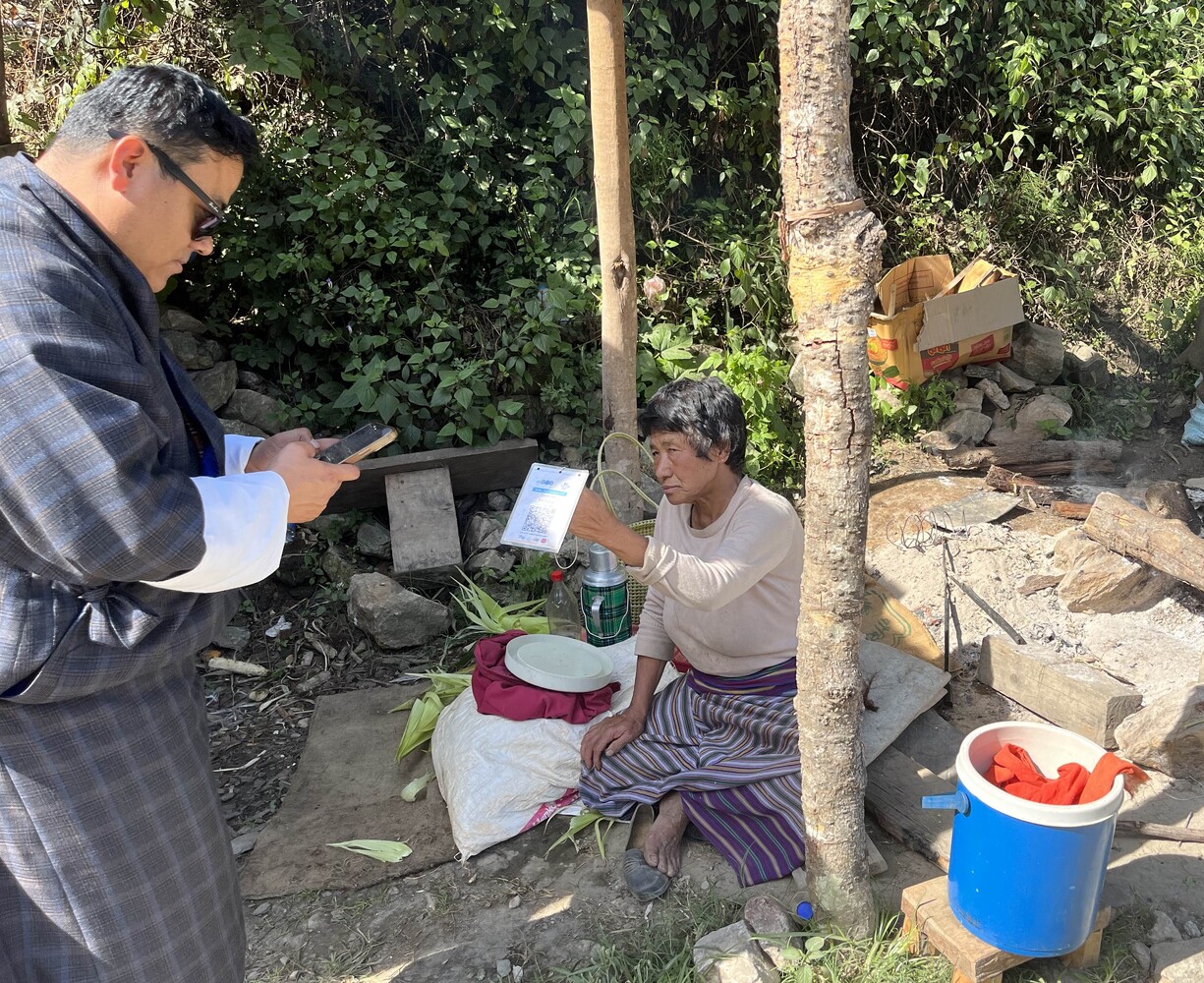Here in the US, we tend to think that we are on the forefront of tech innovation and adoption. In many cases, that’s true – think electricity, the internet, the chocolate chip cookie. But once you get outside our borders, it’s clear that we’re not always global leaders in this regard.
Recently, I had an opportunity to spend some time in Bhutan, a small Himalayan kingdom of less than 1 million people nestled between India and China. In addition to the colorful festivals, unique and spicy cuisine, and spectacular mountains, I witnessed a scene that warmed my fintech heart.
While driving on one of the few paved roads in the country high in the hills above the nearest town, we stopped at a small roadside hut to get a quick snack: corn on the cob roasted over a coal fire. The corn was tasty and kind of chewy, but it was the payment process that fascinated me.
We ordered 2 cobs for the equivalent of about USD $0.50 each, and our guide, Choki, kindly offered to pay. Instead of reaching into his pocket for cash, he took out his phone. The elderly woman selling the corn held up a roughly laminated card with a QR code printed on it. Choki scanned it with his phone, the vendor’s phone dinged, and they thanked each other. Done. Once we got back in the car, I peppered Choki with questions about the transaction.
Turns out, Choki was using an app called mBoB from the Bank of Bhutan. It is one of several bank provided payment apps (including mPay, from Bhutan National Bank) that have become ubiquitous across Bhutan. The app pulls funds from the user’s bank account in real time, and is free to use for the buyer and the merchant. According to our guide, few Bhutanese carry much cash these days. There’s just no need.
Even though Bhutan is considered a “lower middle income economy”, with a GDP of around USD $3,266, mobile phone penetration has reached close to 100%. As mobile phones have exploded in use, so has the prevalence of QR codes for payment. In 2021, the banks created a common standard to ensure compatibility for QR codes. So, a merchant only needs a single QR code and a buyer can use any participating bank payment app to complete a mobile transaction. In a country of just over 700,000 people, the mBoB app has been downloaded over 500,000 times.
And these apps are much more than just payments. The mBoB app can be used to manage a whole host of bank and non-bank tasks, including bill payments, P2P transfers, insurance payments, remittances, and airline tickets. You can even use the mBoB app to vote for your favorite Bhutanese performer on the popular TV show, Melodies of Bhutan!
While many in the fintech world look at the Chinese “super app” WeChat as the gold standard (indeed, Elon Musk has mused about turning Twitter / X into a WeChat-type super app), I find it fascinating that there are other examples of multi-function mobile apps that have taken hold elsewhere. Even though Bhutan is a tiny country on the world stage, they have leapfrogged the US and adopted mobile payments at a much faster rate. Just ask the woman selling corn in a thatch roof shack on the side of a mountain road in Bhutan what method of payment she would prefer. I’m pretty sure it’s not cash.
By Scott Reynolds
Scott Reynolds is a founder and principal of The Fintech Strategy Group. He works with fintech companies to help accelerate new product initiatives and revitalize existing go-to-market strategies through a structured process of developing deep customer, product and market insights.
